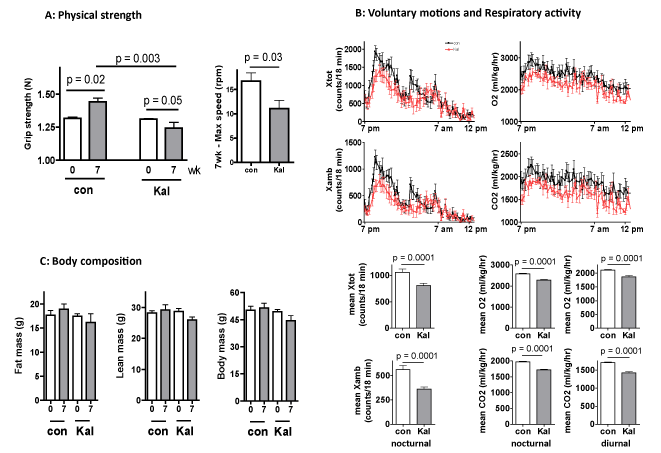
A. Grip strength (Left panel) measurement by an automatic force transducer (Columbus Instruments, Columbus, OH). Max speed (right panel) of physical performance measured by Rota Rod (Columbus Instruments, Columbus, OH). B. Activity (Left panel), oxygen (O2) consumption (upper right), and carbon dioxide (CO2) production were measured by Oxymax system (Columbus Instruments, Columbus, OH). C. Body composition determined by nuclear magnetic resonance (NMR; EchoMRI-100, Echo Medical System, Houston, TX). Kaletra was provided to C57BL/6 mice beginning at age 20 month when the mice were moderately overweight. The drug was mixed with food (0.1% wt/wt) for form pellets using a commercial service. The same diet without drug was given to the control animals. (A, left panel) Grip strength was measured at baseline and in week 7 after drug treatment. (A, right panel) Maxium speed of rota-rod running achieved by the animals in week 7. (B, upper panel) Spontaneous movements, O2 consumption, and CO2 production rate recorded in the metabolic cages between 7 pm and 12 am (darker period 7 pm - 7 am), measured in week 7. Xtot and Xamb: total movements and ambulatory movements, both recorded as the number of beam breaking along the X-direction. (B, lower panel) Mean values of parameters measured above during nocturnal and diurnal periods. (C) Body mass at baseline and in week 7, measured by in vivo NMR. Results are shown as means +/- se, N = 6 for each group. Between-group comparison was analyzed by Student’s t test.